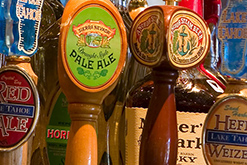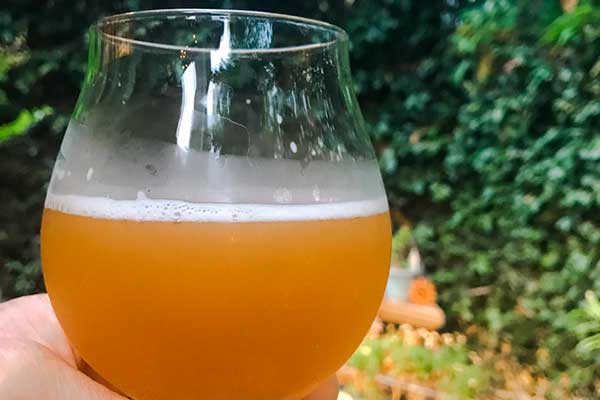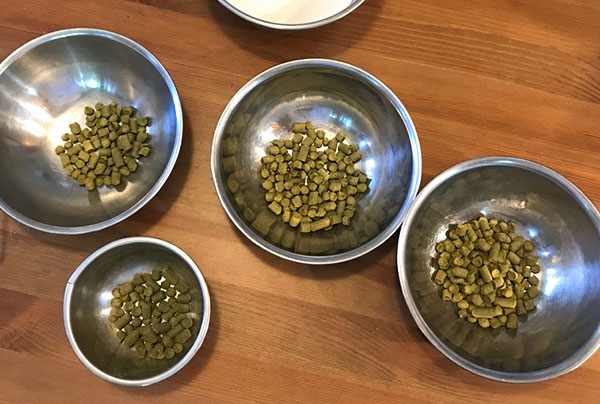What is Pasadena Brewing?
Pasadena Brewing is an awesome website that shares a few homebrew recipes (along with basic instructions to get started), photos (related to beer making and the pasadena area), info videos (fun and instructional) and a few hospitality establishments you may want to check out (to relax and drink beer at, in the greater Pasadena area)!
Pasadena
Pasadena is located just north of Los Angeles and adjacent to the Sab Gabriel mountains and is full of charm and history. It is famous for the Tournament of Roses, Rose Bowl, Jet Propulsion Laboratory, California Institute of Technology, Van Halen, Snotty Scotty & the Hankies and The Doo Dah Parade
Home Brewing
Home Brewing is the art of brewing beer at home, making it yourself. It is really the art of brewing anything at home, but we like to say beer, it's just nice. This is something anyone is capable of doing. Just go down to your local neighborhood Brew Supply Store and they'll be more than happy to load you up with supplies and instructions. And before you know it, your off to making great beer and lots of new friends.
The History of Beer
The art of brewing is as old as civilization. Between 10,000 and 15,000 years ago, some humans discontinued their nomadic hunting and gathering and settled down to farm. Grain was the first domesticated crop that started that farming process.
Through hieroglyphics, cuneiform characters and written accounts, historians have traced the roots of brewing back to ancient African, Egyptian and Sumerian tribes. The oldest proven records of brewing are about 6,000 years old and refer to the Sumerians. Sumeria lay between the Tigris and Euphrates rivers including Southern Mesopotamia and the ancient cities of Babylon and Ur. It is said that the Sumerians discovered the fermentation process by chance. A seal around 4,000 years old is a Sumerian "Hymn to Ninkasi", the goddess of brewing. This "hymn" is also a recipe for making beer. No one knows today exactly how this occurred, but it could be that a piece of bread or grain became wet and a short time later, it began to ferment and a inebriating pulp resulted. These early accounts, with pictograms of what is recognizably barley, show bread being baked then crumbled into water to make a mash, which is then made into a drink that is recorded as having made people feel "exhilarated, wonderful and blissful!" It could be that baked bread was a convenient method of storing and transporting a resource for making beer. The Sumerians were able to repeat this process and are assumed to be he first civilized culture to brew beer. They had discovered a "divine drink" which certainly was a gift from the gods.
From the Gilgamesh Epic, written in the 3rd millennium B.C., we learn that not only bread but also beer was very important. This epic is recognized as one of the first great works of world literature. Ancient oral sagas from the beginning of human history were recorded in writing for the first time. The Gilgamesh Epic describes the evolution from primitive man to "cultured man".
"Enkidu, a shaggy, unkempt, almost bestial primitive man, who ate grass and could milk wild animals, wanted to test his strength against Gilgamesh, the demigod-like sovereign. Taking no chances, Gilgamesh sent a (prostitute) to Enkidu to learn of his strengths and weaknesses. Enkidu enjoyed a week with her, during which she taught him of civilization. Enkidu knew not what bread was nor how one ate it. He had also not learned to drink beer. The (prostitute) opened her mouth and spoke to Enkidu: 'Eat the bread now, O Enkidu, as it belongs to life. Drink also beer, as it is the custom of the land.' Enkidu drank seven cups of beer and his heart soared. In this condition he washed himself and became a human being. "
The Babylonians became the rulers of Mesopotamia after the Sumerian empire collapsed during the 2nd millennium bc. Their culture was derived from that of the Sumerians, and as a consequence of this, they also mastered the art of brewing beer. Today we know that the Babylonians new how to brew 20 different types of beer.
In ancient times beer was cloudy and unfiltered. The "drinking straws" were used to avoid getting the brewing residue, which was very bitter, in the mouth. Beer from Babylon was exported and distributed as far away as Egypt. Hammurabi, an important Babylonian King, decreed the oldest known collection of laws. One of these laws established a daily beer ration. This ration was dependent on the social standing of the individual, a normal worker received 2 liters, civil servants 3 liters, administrators and high priests 5 liters per day. In these ancient times beer was often not sold, but used as barter.
The Egyptians carried on the tradition of beer brewing. They also used unbaked bread dough for making beer and added dates to the brew to improve the taste. The importance of beer brewing in ancient Egypt can be seen from the fact that the scribes created an extra hieroglyph for "brewer".
Although beer as we know it had its origins in Mesopotamia, fermented beverages of some sort or another were produced in various forms around the world. For example, Chang is a Tibetan beer and Chicha is a corn beer and kumis is a drink produced from fermented camel milk. The word beer comes from the Latin word bibere, meaning "to drink", and the Spanish word cerveza originates from the Greek goddess of agriculture, Ceres.
After Egypt was succeeded by the Greeks and Romans, beer continued to be brewed. Plinius reported of the popularity of beer in the Mediterranean area before wine took hold. In Rome, wine became ambrosia from the god Bacchus. Beer was only brewed in the outer areas of the Roman Empire where wine was difficult to obtain. For the Romans beer was considered a barbarian drink. The oldest proof that beer was brewed on German soil, comes from around 800 B.C. in the early Hallstatt Period, where beer amphora found near the present day city of Kulmbach have been dated back to this time. As Tacitus, who first wrote about the ancient Germans or Teutons, put it like this: "To drink, the Teutons have a horrible brew fermented from barley or wheat, a brew which has only a very far removed similarity to wine". Beer of that era could not be stored, was cloudy and produced almost no foam. Early civilizations found the mood-altering properties of beer supernatural, and intoxication was considered divine. Beer, it was thought, must contain a spirit or god, since drinking the liquid so possessed the spirit of the drinker. The ancient Germans regarded beer not only a sacrifice to the gods but they, as in Egypt, also brewed beer for their own enjoyment. For example, in the Finnish poetic saga Kalewala, 400 verses are devoted to beer but only 200 were needed for the creation of the earth. According to the Edda, the great Nordic epic, wine was reserved for the gods, beer belonged to mortals and mead to inhabitants of the realm of the dead.
As the cultivation of barley spread north and west, brewing went with it. As time passed, the production of beer came under the watchful eye of the Roman Church. Christian abbeys, as centers of agriculture, knowledge and science, refined the methods of brewing. Initially in the making of beer for the brothers and for visiting pilgrims, later as a means of financing their communities. However, there was still very little known about the role of yeast in completing fermentation. Beer brewing played an important role in daily lives. Beer was clearly so desired that it led nomadic groups into village life. Beer was considered a valuable (potable) foodstuff and workers were often paid with jugs of beer.
By the fifteenth century, there was a record of hops used in Flemish beer imported into England, and by the sixteenth century hops had gained widespread use as a preservative in beer, replacing the previously used bark or leaves. Perhaps the most widely known event in brewing history was the establishment of German standards for brewers. The first of these regulations was the inspiration for the Reinheitsgebot of 1516 - the most famous beer purity law. This pledge of purity states that only four ingredients can be used in the production of beer: water, malted barley, malted wheat and hops. Yeast, though not included in this list, was acceptable, as it was taken for granted to be a key ingredient in the brewing process. The "Reinheitsgebot" was the assurance to the consumer that German beers would be of the highest quality in the world and acknowledges the European disdain for adding adjuncts such as corn, rice, other grains and sugars.
The next great development occurred in the mid-nineteenth century, through work done by Louis Pasteur, the first to propose an explanation of how yeast worked. Shortly thereafter, samples of Bavarian yeast provided the successful identification of a single-cell and strain of the bottom-fermenting lager yeast. German brewers had started to make beer by lagering (storing) in 1402. Brewing was not possible in the warm months because wild yeasts prevalent in the warmer weather of summertime would sour the beer. Brewers discovered that brewing in the cold months and storing the beer in caves in the nearby Alps impacted stability to the beer and enhanced it with a cleaner taste, although they did not know why. Today, we know that the reason the beer was clearer and cleaner was due to the fermentation process the beer underwent in the cold, during which the chemicals and bacteria responsible for clouding beer were unable to thrive and were therefore filtered out of the beer. In 1880, there were approximately 2,400 breweries operating in the US embracing many of the classic brewing styles. Today, there are 375 breweries. The change can be traced back to the era of the Volstead Act of 1919 - this Eighteenth Amendment to the Constitution ushered in Prohibition. During this time, the smaller breweries lay idle as the larger establishments limped by with the production of cereal malts and near-beers.
Following Prohibition came World War II, with corresponding food shortages and therefore increased substitution of adjuncts for malt - a lighter beer resulted. With a large part of the male population off fighting the war, the work force in America was made up largely of women; thus marketing to this population solidified the hold of a lighter-styled beer. Following the war, the large national breweries catered to the tastes of this expanded beer market. Today, there is a revolution in America as brewing returns to its roots, and a great variety of high-quality beers are being revived, imported and enjoyed!



